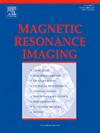Evaluation of the glymphatic system in relapsing remitting multiple sclerosis by measuring the diffusion along the perivascular space
IF 2.1
4区 医学
Q2 RADIOLOGY, NUCLEAR MEDICINE & MEDICAL IMAGING
引用次数: 0
Abstract
Background
In the inflammatory process of multiple sclerosis (MS) several toxic waste products are generated. The clearance of these products might depend on the glymphatic system; however, it's preserved function in MS is uncertain. Recently, it was suggested that this ‘waste clearance’ system can be examined by measuring the diffusion along the perivascular space (ALPS) index.
Methods
Reproducibility of the ALPS index was tested with intraclass correlation on two open-source datasets with two methods: calculating ALPS indices from the skeleton map (sk-ALPS) and via registration to the common space (ro-ALPS).
ALPS indices of 66 MS patient were calculated via the reorientation method. Spearman's correlation and partial least squares regression were applied to reveal the connection between the ALPS indices and the radiological (lesion count) and clinical parameters (SDMT, BVMT, CVLT, EDSS, disease duration) of the patients.
Results
Repeatability of the ALPS index calculated by the ro-ALPS method is the most reliable (ICC: 0.961). Significant correlation was found between the left ALPS index and SDMT. On the right side, significant correlation was found between the ALPS index and the number of periventricular lesions and black holes. The most important predictors of EDSS are disease duration, age, SDMT and infratentorial lesion count.
Conclusion
Reproducibility of the ALPS index ranges from ‘good’ to ‘excellent’. No relationship was found between the ALPS index and clinical disability. A lateralization was observed with cognitive characteristics on the left sided ALPS index and radiological characteristics on the right sided ALPS index.
通过测量沿血管周围空间的扩散评价淋巴系统在复发缓解多发性硬化症中的作用。
背景:在多发性硬化症(MS)的炎症过程中会产生几种有毒废物。这些产物的清除可能依赖于淋巴系统;但其在多发性硬化症中的保存功能尚不确定。最近,有人建议可以通过测量沿血管周围空间(ALPS)指数的扩散来检测这种“废物清除”系统。方法:采用从骨架图计算ALPS指数(sk-ALPS)和公共空间配准(ro-ALPS)两种方法,在2个开源数据集上采用类内相关性检验ALPS指数的可重复性。采用重定向法计算66例MS患者的ALPS指数。应用Spearman相关和偏最小二乘回归分析ALPS指数与患者的影像学(病变计数)和临床参数(SDMT、BVMT、CVLT、EDSS、病程)之间的关系。结果:采用ro-ALPS法计算的ALPS指数重复性最可靠(ICC: 0.961)。左侧ALPS指数与SDMT呈显著相关。在右侧,ALPS指数与脑室周围病变和黑洞数量呈显著相关。EDSS最重要的预测因子是病程、年龄、SDMT和幕下病变计数。结论:阿尔卑斯山指数的重现性为“好”至“优”。阿尔卑斯指数与临床残疾无相关性。左侧阿尔卑斯指数表现为认知特征,右侧阿尔卑斯指数表现为影像学特征。
本文章由计算机程序翻译,如有差异,请以英文原文为准。
求助全文
约1分钟内获得全文
求助全文
来源期刊

Magnetic resonance imaging
医学-核医学
CiteScore
4.70
自引率
4.00%
发文量
194
审稿时长
83 days
期刊介绍:
Magnetic Resonance Imaging (MRI) is the first international multidisciplinary journal encompassing physical, life, and clinical science investigations as they relate to the development and use of magnetic resonance imaging. MRI is dedicated to both basic research, technological innovation and applications, providing a single forum for communication among radiologists, physicists, chemists, biochemists, biologists, engineers, internists, pathologists, physiologists, computer scientists, and mathematicians.
 求助内容:
求助内容: 应助结果提醒方式:
应助结果提醒方式:


